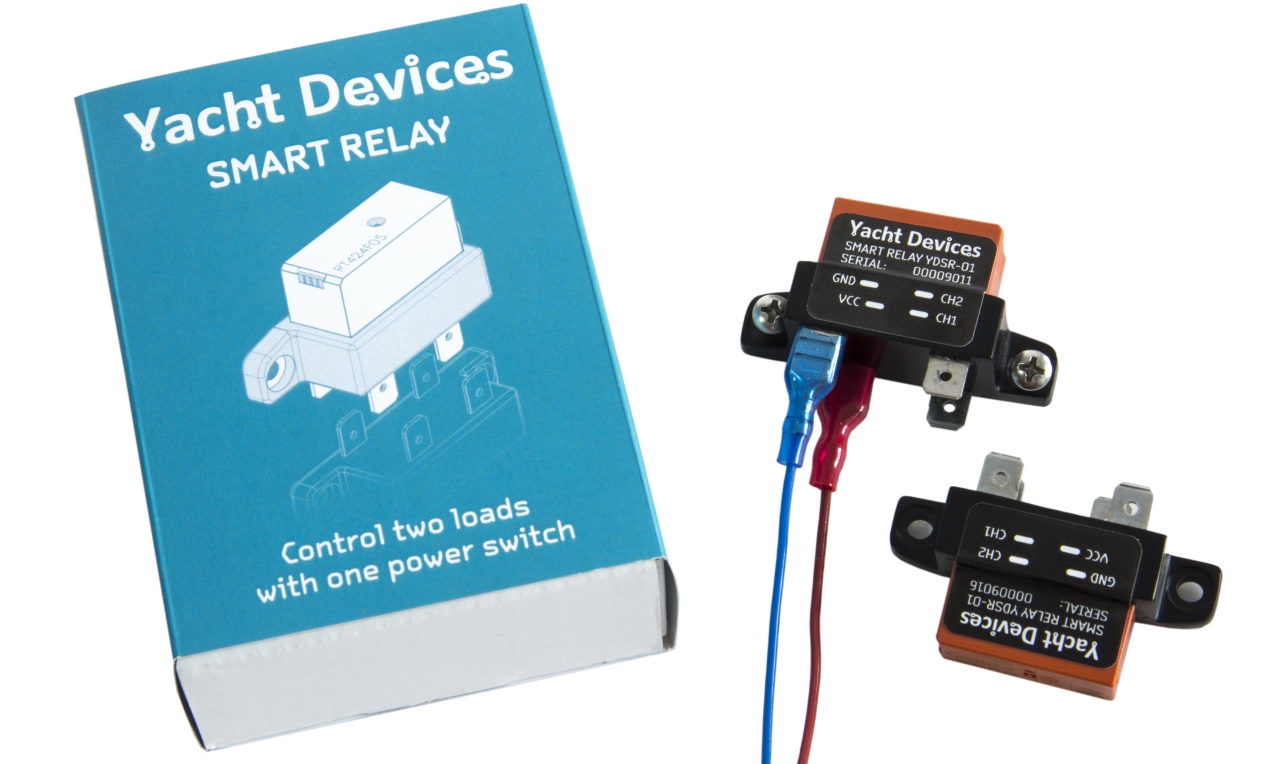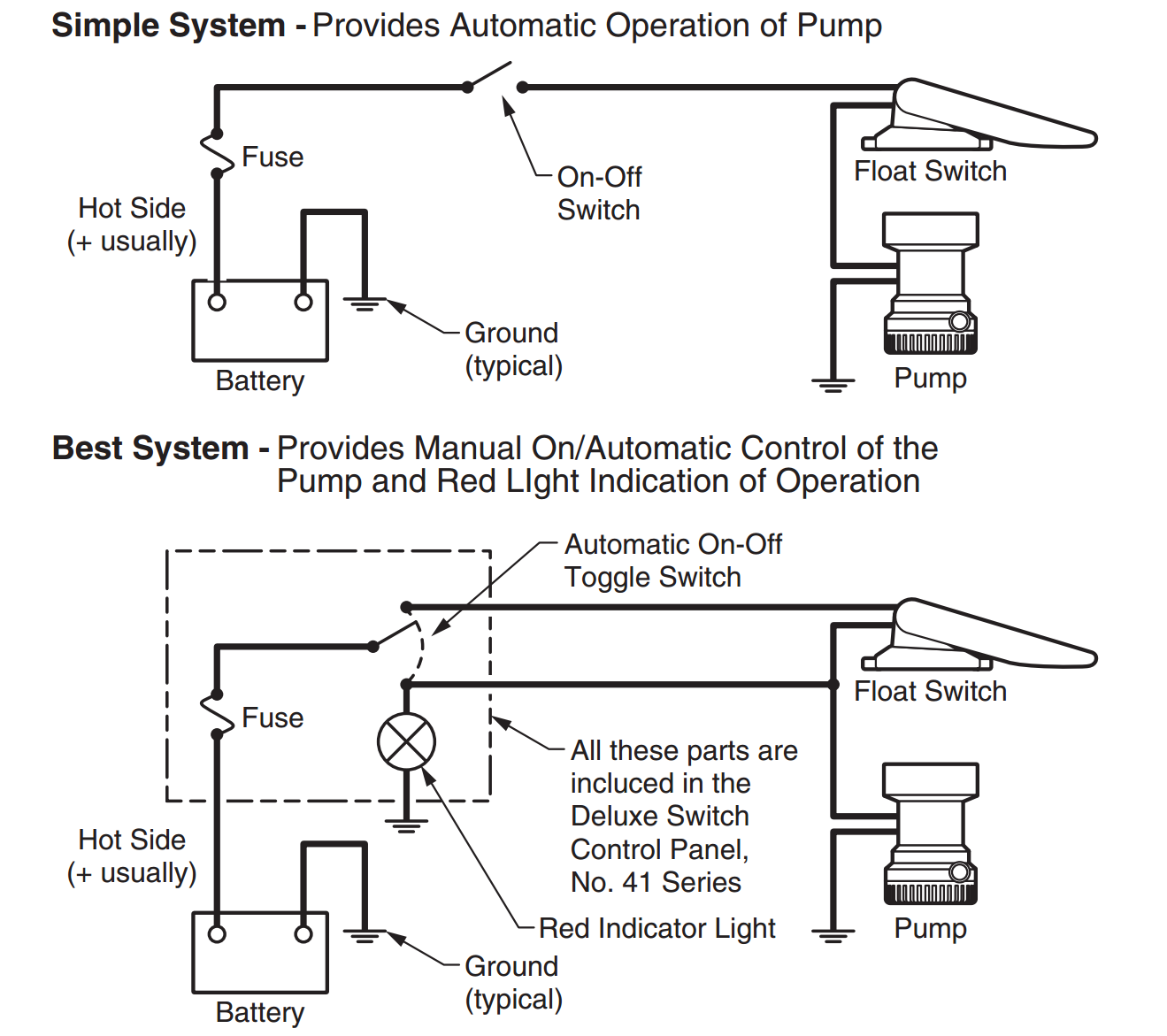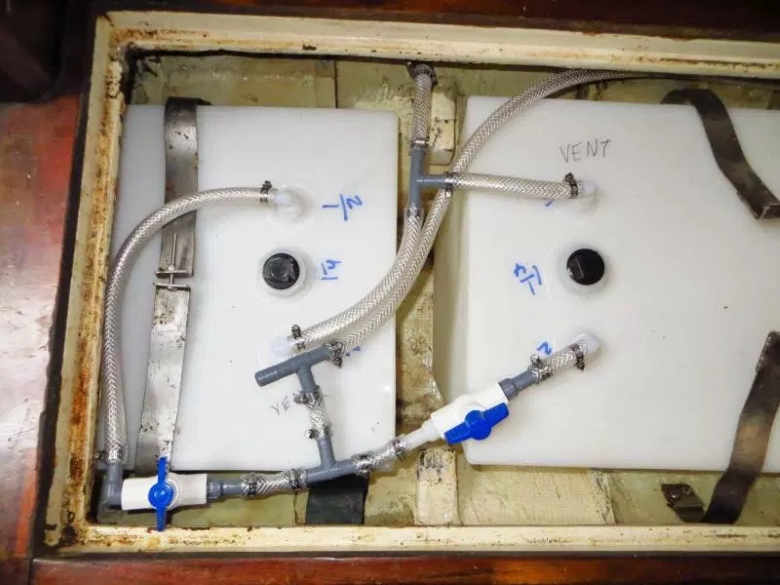February 27, 2018 Smart Relay: our first non-NMEA product
Two loads require at least three wires. But what if you only have two? You don't need to rewire your mast, dismount a deckhead or drill bulkheads. Try Smart Relay.
The case of the Smart Relay is molded from plastic and is waterproof. It hosts a bi-stable relay, which uses power only during switching, at all other times the Device consumes less than 0.5 mA, so there is no additional impact on your batteries. With it, you can turn on an additional load or switch between two loads. The secret is in the microcontroller and capacitor inside.
It is not always easy to change wires on a boat. The cable channel may bend behind the galley, the hole for cables in a bulkhead may be sealed with silicone sealant, and you need to disassemble half the boat to be able to pull the wire. And then you will need to install the replacement cable and put it all back together.
Picture 1. Wiring diagram from the Rule Industries Float Switch manual
For example, you have a bilge pump and wish to add a float switch. However, you also want to keep the manual control and do not wish to replace 2-wire cable with a 3-wire one. And, of course, you do not like the idea of changing the button on your panel to 3-position switch.
Picture 2. Manual/automatic control with the Smart Relay
Smart Relay is an ideal solution for this case. It has two output channels (CH1 and CH2 in Picture 2). When powering, Smart Relay always turns on channel 1, and a fast cycle of power switch causes switching between channels.
In Picture 2, channel 2 of the Smart Relay is connected to the power terminal of the pump in parallel to the float switch. When you turn the On-Off Switch on, channel 2 of Smart Relay is not active and the float switch controls the pump. Cycle the On-Off Switch within one second and channel 2 becomes active, the current will flow from the VCC to CH2, and the pump will turn on.
Picture 3. Connection of two water tanks (photo from Sundowner)
If you are going on a long cruise, it may be a good idea to install an additional fresh water pump for the second tank. You can forget about manual switching of tanks and, in the worst case, you will have a spare pump. Smart Relay can make installation easier. Connect the first pump to channel 1 and second pump to channel 2. The first pump is turned on in the usual way, and to turn on the second pump instead of the first you will need to press on-off-on. Easy? Yes, you do not need to lay additional electric wires for the second pump and do not need to install an additional switch on the buttons panel.
Smart Relay may be the best option when you are installing a combined deck/steaming light instead of single steaming light. Of course, it is much better to have two separate switches in this case. But we know of a yacht where the deck light was not working for many years because the owner had no time (and no great desire) to disassemble a deckhead. He needed to remove the grab rails and plastic panels (seams sealed with silicone) to get access to the wires going from the buttons panel to the mast step. So, the owner was glad to get the Smart Relay and now he is able turn the deck light on and off in addition to the steaming light. A non-optimal solution is much better than nothing.
Smart Relay is available for 12V DC circuits only (works from 6 to 16 Volts), and can switch loads with continuous loads up to 8A and peak load of 15A (4 seconds, 10% duty cycle).
UPDATE: all Relays supplied in June 2018 or later, work in circuits with 28V maximum allowed voltage.
You can learn more about this product on the homepage and order it for USD $69.
Next articles:
- NMEA 2000 Wi-Fi Gateway support in Expedition 10 software / February 19, 2018
- Yacht Devices at Boot Dusseldorf 2018 / January 30, 2018
- Meet us at the Dusseldorf Boat Show / January 17, 2018
Previous articles:
- Updates for Wi-Fi, USB, NMEA 0183 gateways and CAN Log Viewer software / March 2, 2018
- First installer's software works on Mac OS X, Linux and Microsoft Windows / March 20, 2018
- Diverse Yachts product support in Voyage Recorder / March 22, 2018
See also: recent news, all news...



